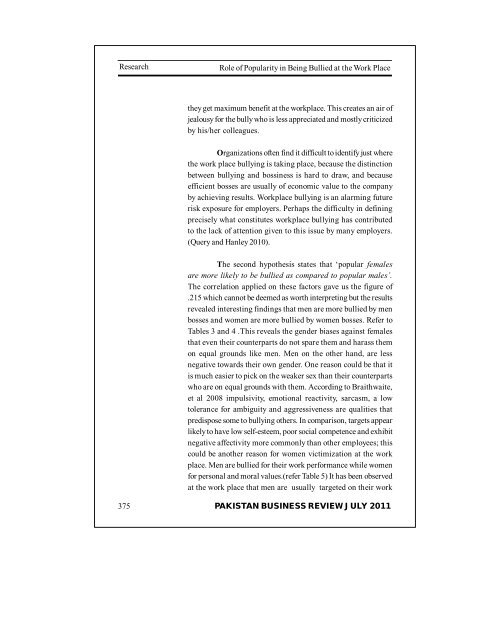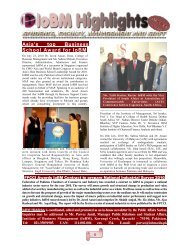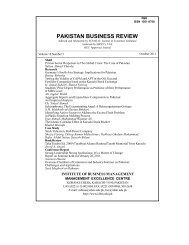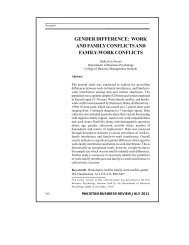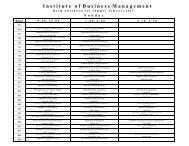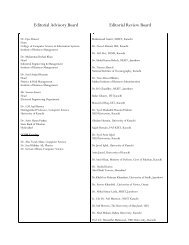PAKISTAN BUSINESS REVIEW - Institute of Business Management
PAKISTAN BUSINESS REVIEW - Institute of Business Management
PAKISTAN BUSINESS REVIEW - Institute of Business Management
You also want an ePaper? Increase the reach of your titles
YUMPU automatically turns print PDFs into web optimized ePapers that Google loves.
Research<br />
Role <strong>of</strong> Popularity in Being Bullied at the Work Place<br />
they get maximum benefit at the workplace. This creates an air <strong>of</strong><br />
jealousy for the bully who is less appreciated and mostly criticized<br />
by his/her colleagues.<br />
Organizations <strong>of</strong>ten find it difficult to identify just where<br />
the work place bullying is taking place, because the distinction<br />
between bullying and bossiness is hard to draw, and because<br />
efficient bosses are usually <strong>of</strong> economic value to the company<br />
by achieving results. Workplace bullying is an alarming future<br />
risk exposure for employers. Perhaps the difficulty in defining<br />
precisely what constitutes workplace bullying has contributed<br />
to the lack <strong>of</strong> attention given to this issue by many employers.<br />
(Query and Hanley 2010).<br />
The second hypothesis states that ‘popular females<br />
are more likely to be bullied as compared to popular males’.<br />
The correlation applied on these factors gave us the figure <strong>of</strong><br />
.215 which cannot be deemed as worth interpreting but the results<br />
revealed interesting findings that men are more bullied by men<br />
bosses and women are more bullied by women bosses. Refer to<br />
Tables 3 and 4 .This reveals the gender biases against females<br />
that even their counterparts do not spare them and harass them<br />
on equal grounds like men. Men on the other hand, are less<br />
negative towards their own gender. One reason could be that it<br />
is much easier to pick on the weaker sex than their counterparts<br />
who are on equal grounds with them. According to Braithwaite,<br />
et al 2008 impulsivity, emotional reactivity, sarcasm, a low<br />
tolerance for ambiguity and aggressiveness are qualities that<br />
predispose some to bullying others. In comparison, targets appear<br />
likely to have low self-esteem, poor social competence and exhibit<br />
negative affectivity more commonly than other employees; this<br />
could be another reason for women victimization at the work<br />
place. Men are bullied for their work performance while women<br />
for personal and moral values.(refer Table 5) It has been observed<br />
at the work place that men are usually targeted on their work<br />
375<br />
<strong>PAKISTAN</strong> <strong>BUSINESS</strong> <strong>REVIEW</strong> JULY 2011


